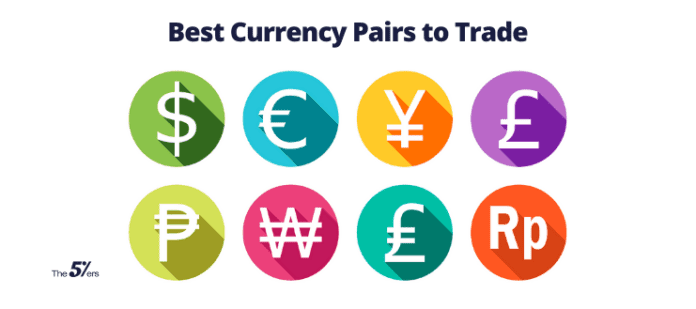What Is a Currency Pair?
A currency pair is the quotation of two different currencies, with the value of one currency being quoted against the other. The first listed currency of a currency pair is called the base currency, and the second currency is called the quote currency.
Currency pairs compare the value of one currency to another—the base currency (or the first one) versus the second or the quote currency. It indicates how much of the quote currency is needed to purchase one unit of the base currency. Currencies are identified by an ISO currency code, or the three-letter alphabetic code they are associated with on the international market. So, for the U.S. dollar, the ISO code would be USD.
KEY TAKEAWAYS
- A currency pair is a price quote of the exchange rate for two different currencies traded in FX markets.
- When an order is placed for a currency pair, the first listed currency or base currency is bought while the second listed currency in a currency pair or quote currency is sold.
- The EUR/USD currency pair is considered the most liquid currency pair in the world. The USD/JPY is the second most popular currency pair in the world
Understanding Currency Pairs
Trading currency pairs is conducted in the foreign exchange market, also known as the forex market. It is the largest and most liquid market in the financial world. This market allows for the buying, selling, exchanging, and speculation of currencies. It also enables the conversion of currencies for international trade and investment. The forex market is open 24 hours a day, five days a week (including most holidays), and sees a huge amount of trading volume.2
All forex trades involve the simultaneous purchase of one currency and sale of another, but the currency pair itself can be thought of as a single unit—an instrument that is bought or sold. When you buy a currency pair from a forex broker, you buy the base currency and sell the quote currency. Conversely, when you sell the currency pair, you sell the base currency and receive the quote currency.
Currency pairs are quoted based on their bid (buy) and ask prices (sell). The bid price is the price that the forex broker will buy the base currency from you in exchange for the quote or counter currency. The ask—also called the offer—is the price that the broker will sell you the base currency in exchange for the quote or counter currency.
When trading currencies, you’re selling one currency to buy another. Conversely, when trading commodities or stocks, you’re using cash to buy a unit of that commodity or a number of shares of a particular stock. Economic data relating to currency pairs, such as interest rates and economic growth or gross domestic product (GDP), affect the prices of a trading pair.
Major Currency Pairs
A widely traded currency pair is the euro against the U.S. dollar or shown as EUR/USD. In fact, it is the most liquid currency pair in the world because it is the most heavily traded.1 The quotation EUR/USD = 1.2500 means that one euro is exchanged for 1.2500 U.S. dollars. In this case, EUR is the base currency and USD is the quote currency (counter currency). This means that 1 euro can be exchanged for 1.25 U.S. dollars. Another way of looking at this is that it will cost you $125 to buy 100 euros.
There are as many currency pairs as there are currencies in the world. The total number of currency pairs that exist changes as currencies come and go. All currency pairs are categorized according to the volume that is traded on a daily basis for a pair.
The currencies that trade the most volume against the U.S. dollar are referred to as the major currencies, which include:
- EUR/USD or the Euro vs. the U.S. dollar
- USD/JPY or dollar vs. the Japenese yen
- GBP/USD or the British pound vs. the dollar
- USD/CHF or the Swiss franc vs. the dollar
- AUD/USD or the Australian dollar vs. the U.S. dollar
- USD/CAD or the Canadian dollar vs. the U.S. dollar
The final two currency pairs are known as commodity currencies because both Canada and Australia are rich in commodities and both countries are affected by their prices. The major currency pairs tend to have the most liquid markets and trade 24 hours a day Monday through Thursday. The currency markets open on Sunday night and close on Friday at 5 p.m. U.S. Eastern time.2
Minors and Exotic Pairs
Currency pairs that are not associated with the U.S. dollar are referred to as minor currencies or crosses. These pairs have slightly wider spreads and are not as liquid as the majors, but they are sufficiently liquid markets nonetheless. The crosses that trade the most volume are among the currency pairs in which the individual currencies are also majors. Some examples of crosses include the EUR/GBP, GBP/JPY, and EUR/CHF.
Exotic currency pairs include currencies of emerging markets. These pairs are not as liquid, and the spreads are much wider. An example of an exotic currency pair is the USD/SGD (U.S. dollar/Singapore dollar).







